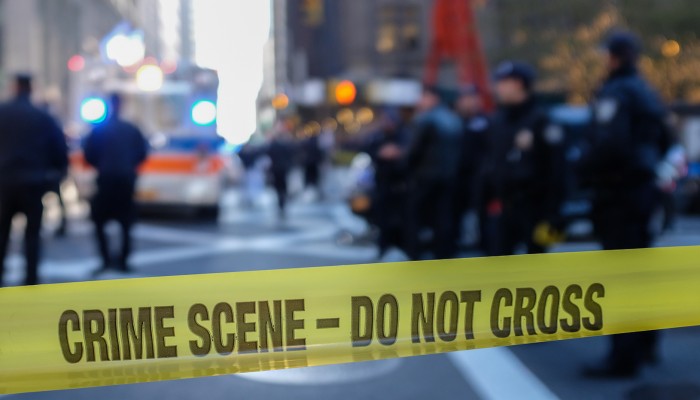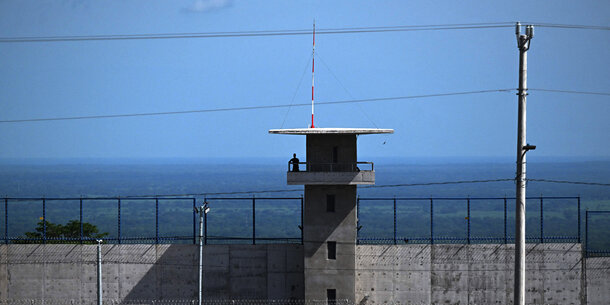With the end of the year approaching, trends in crime for 2019 are snapping into focus. They offer some good news, including decreases that offset a spike from 2015 and 2016 in many places. But there are also some reminders of the need for innovative solutions to urban violence.
What’s past is prologue
It’s important to understand this year’s data against the broader background of crime in the United States. Between 1960 and 1980, the murder rate roughly doubled, climbing from 5.1 per 100,000 people to 10.2. After a short dip, murder rates reached their most recent high point in 1991, peaking at 9.8. This increase was not confined to just homicide: rates of crime and violent crime also rose dramatically. In some cities, the trend was even sharper, with New York City experiencing 2,245 murders in 1990 alone, corresponding to a murder rate of more than 30 per 100,000.
Then something incredible happened. Crime dropped — and kept on dropping.
By 2014, the national murder rate had fallen to 4.4 per 100,000. Big cities largely shared in the decline. That year, New York City’s murder rate had fallen by nearly 90 percent from its peak. Researchers everywhere, including at the Brennan Center, have studied this “great crime decline.”
This broader trend toward greater safety appeared to stall and reverse in 2015 and 2016. The national murder rate climbed to 5.4 in 2016 — a far cry from 1990 levels, but disturbing, nonetheless. Concern focused on a few big cities, especially Chicago, which had 765 murders in 2016, up from 478 the year before. Thankfully, though, the new crime wave that some warned was just over the horizon never materialized. Violent crime appeared to stabilize in 2017 and then dropped sharply in 2018.
So, what happened this year?
We’ve identified several key trends among major cities. Note that for some cities, data is available through November; other cities’ data is more recent or older. This variation is due to local reporting practices, and we provide the most recent data available.
Murders decline in Chicago, again
First and foremost, crime continues to drop in Chicago.
Though it hasn’t quite returned to 2014 levels, it’s making steady progress. Compared to late November of last year, reported crimes are down by 10 percent. That decrease is driven, in part, by significant declines in property crime. But declines in violent crimes this past year were equally significant, falling by over 11 percent.
Robberies and aggravated assaults are down by 18 percent and 5 percent, respectively. And importantly, homicides — which spiked so sharply earlier between 2015 and 2016 — are down again by about 13 percent, dropping to 452 killings compared to 517 at the same time last year. Applying the forecasting methodology used in previous Brennan Center analyses, Chicago is on track to record fewer than 500 homicides this year — a 35 percent decrease from 2016.
It’s not all good news. The one exception to this decline in violent crime is reported rape, which was up by around 1 percent. Furthermore, even if Chicago returned to its 2014 murder rate, the city’s murder rate would still be three times higher than the national rate. Even as crime drops in the city, that level of violence demands attention from policymakers.
Continuing low violent crime rates in New York City and San Francisco
Of the drops in crime seen nationwide in the last quarter-century, New York City saw some of the sharpest compared to other cities. And those public safety gains are largely holding.
This year, the number of crimes and violent crimes reported through December 1 is largely unchanged from the prior year, declining 1.4 percent and increasing 1.5 percent, respectively. While homicides are up around 8 percent, it’s important to remember how low New York City’s murder rate is to begin with — last year, it was 30 percent below the national murder rate — and avoid overreaction to relatively small year-to-year fluctuations. New York has seen single-year increases before — in 2015, for example — and continues to be an extraordinarily safe major city.
The same is true of San Francisco. The data through October shows significant declines in the number of homicides (down around 18 percent) and reported rapes (down 14 percent) contributing to a roughly 7 percent decrease in violent crimes reported. (San Francisco reports an 8 percent decline in violent crime in the data we reviewed, but this accounts for a decrease in human trafficking crimes. While that decrease is good news, most cities don’t include trafficking in violent crime tallies, so we exclude it here too.)
Property crimes are down 5 percent overall, with the number of reported burglaries falling 16 percent. These are small declines, though, considering San Francisco’s relatively high rate of property crime. In 2018, San Francisco’s property crime rate was the third highest among cities with populations of 500,000 or more. It followed only Memphis and Albuquerque, two cities that struggle with both poverty and crimes typically associated with poverty.
Why would a prosperous city with a low rate of the serious violent crimes have high incidences of property crime?
The causes of crime are complicated, and there’s no single answer for why San Francisco’s property crime rate is so high. But two contributing factors might be inequality. The economic indicators that give San Francisco its reputation as a rich city mask an important reality: San Francisco is so wealthy because its wealthiest citizens are very wealthy. The large paychecks for tech workers drive a sky-high cost of living, which in turn contributes to the city’s high population of homeless people and may also drive theft offenses.
Slight increase in violent crime in Philadelphia
There’s been an understandable focus on Philadelphia after the 2017 election of its progressive, reform-oriented district attorney, Larry Krasner. He eliminated cash bail for most nonviolent offenses, required prosecutors to explain the cost to taxpayers of incarceration when seeking a prison sentence, directed them to seek lighter sentences generally, and dropped some drug prosecutions.
Of course, Krasner’s reform-minded approach has its detractors. Homicides in Philadelphia increased by more than 10 percent in 2018, prompting some concern about the consequences of his reforms. But correlation does not imply causation, and it would be a mistake to diagnose a new trend based on a single year of data, especially since the city’s murder rate has been trending upward since 2013, well before he took office.
This year, through December 1, violence appears to be stabilizing, with violent crime rising by just 4 percent — within the realm of yearly variation. That increase includes a less than 1 percent rise in the number of homicides, though; upticks in robbery and aggravated assault account for most of the increase. For added context, Philadelphia’s violent crime rate was 909 per 100,000 in 2018, the lowest it’s been since at least 1990. If trends continue, the violent crime rate in 2019 will remain near the bottom of that trend.
Critically, relative stability in violent crime trends has occurred even as the jail population dropped. In January 2017, the average daily population was 6,807 incarcerated people, and it fell to 6,409 by the time Krasner took office. As of January 2019, the number was down to 4,699.
It’s too soon to evaluate Krasner’s impact on the city, but these are important data points to consider when evaluating the effect of criminal justice reform policies.
Crime, immigration, and the border: continued safety in El Paso
President Trump frequently argues that the border and border cities are extremely dangerous places — and that cities like El Paso, Texas, are kept safe only by draconian immigration policies, physical walls, or both. But it’s not true. For one, research suggests that undocumented immigrants are less likely to commit violent crimes than U.S. citizens.
El Paso’s experience is a case in point. This year, it remains one of the safest cities in the United States. In 2018, of the 50 largest cities in America, El Paso experienced the fourth lowest violent crime rate and second lowest crime rate, trailing only Virginia Beach, Virginia. Through August of this year, the number of crimes and violent crimes is down a little over 3 percent.
And if not for tragedy, El Paso’s violent crime trends would be even more encouraging. For the past decade, the city saw between 10 and 23 homicides per year. Last year ended with 23. Prior to August, the city had recorded just 10. Then, 22 people were killed in a massacre perpetrated by a white supremacist.
Even with these tragic murders, El Paso is again on track for a very low number of homicides for a city its size. But it’s telling, and tragic, that one person carrying a single assault rifle can double a major city’s murder count in a hate-filled attack.
An urgent need for solutions to urban violence in Baltimore
Lastly, we turn to another place where crime and violence spiked in 2015: Baltimore. This year, Baltimore’s story continues to be a mixed one. The total number of crimes reported in the city fell by almost 6 percent compared to 2018 (through the last week of November), with violent crime falling by about 2.5 percent. Robbery, burglary, theft, and auto theft decreased modestly, while reported rape fell dramatically — with law enforcement documenting nearly 26 percent fewer offenses.
Unfortunately, even as the number of other violent crimes dropped, Baltimore’s murder total rose. Through November, there were 313 homicides reported — an increase of 31 from the same time in 2018. This increase could offset the progress the city made last year, when the city’s homicide total dropped by roughly 10 percent, from 342 to 309. This will do little for the city’s reputation for violence. Among 24 similarly sized cities, just two saw higher violent crimes rates than Baltimore in 2018: Detroit and Memphis.
Perhaps even more so than other cities, there is no single explanation for Baltimore’s recent experience with crime. Corruption, poverty, and an almost complete breakdown in community-police relations all offer some explanation. Similarly, no single solution will bring justice or safety to its residents.
Building on successes and focusing on challenges
It’s too soon to draw national conclusions, which would also have to be based on a review of many additional cities and areas, but the declines in Chicago especially point in a positive direction.
As the year draws to a close, the data points toward significant public safety gains in some major cities and stabilization in others. The few trouble spots also indicate the need for targeted, smart solutions to urban violence.







